Above: Lipavi C15 container, N15 polycarbonate rack. Lipavi C15L lid.
Actual prep time: 90 minutes
Serves 3-4 per lb/450 g of meat.
Level of difficulty 2.75

Based solely on its appearance in the butcher’s case, eye of round looks almost like a filet/tenderloin waiting to be cut into steaks. As we mentioned in a recent article about New Yorks and rib eyes, selecting cuts of meat strictly on a narrow basis of appearance is a recipe for disappointment. The eye of round can put any method of cooking to the test.
Eye of round “roasts” are usually 2 lb/1 Kg or larger–the entire eye of round muscle weighs between 7-8 lbs/4-5 Kg. The surface tissue is quite tough and usually comprises about 20% of total weight. For this recipe, we are going to use the trim to make a concentrated brown beef stock. If your roast is already well trimmed, you can skip over the process of caramelizing the trim and proceed to the caramelization of the vegetables as explained. In any case, you may decide to fortify the stock later with any of the prefabricated beef bouillon products available on the spice shelves at the market.

We acquired the entire sub-primal for purposes of the demonstration. Because of the unique characteristics of sous vide, the procedure is the same regardless of the size or number of the pieces within this weight and volume range. This recipe can be uniformly applied to any eye of round roast between 2 lb/1 Kg and 7 lb/3.5 Kg without changing the time or temperature parameters.

The cut is sheathed with a layer of sinew and fat.

Use your favorite sharp knife to remove everything that is white. Set the trim aside to make the sauce.
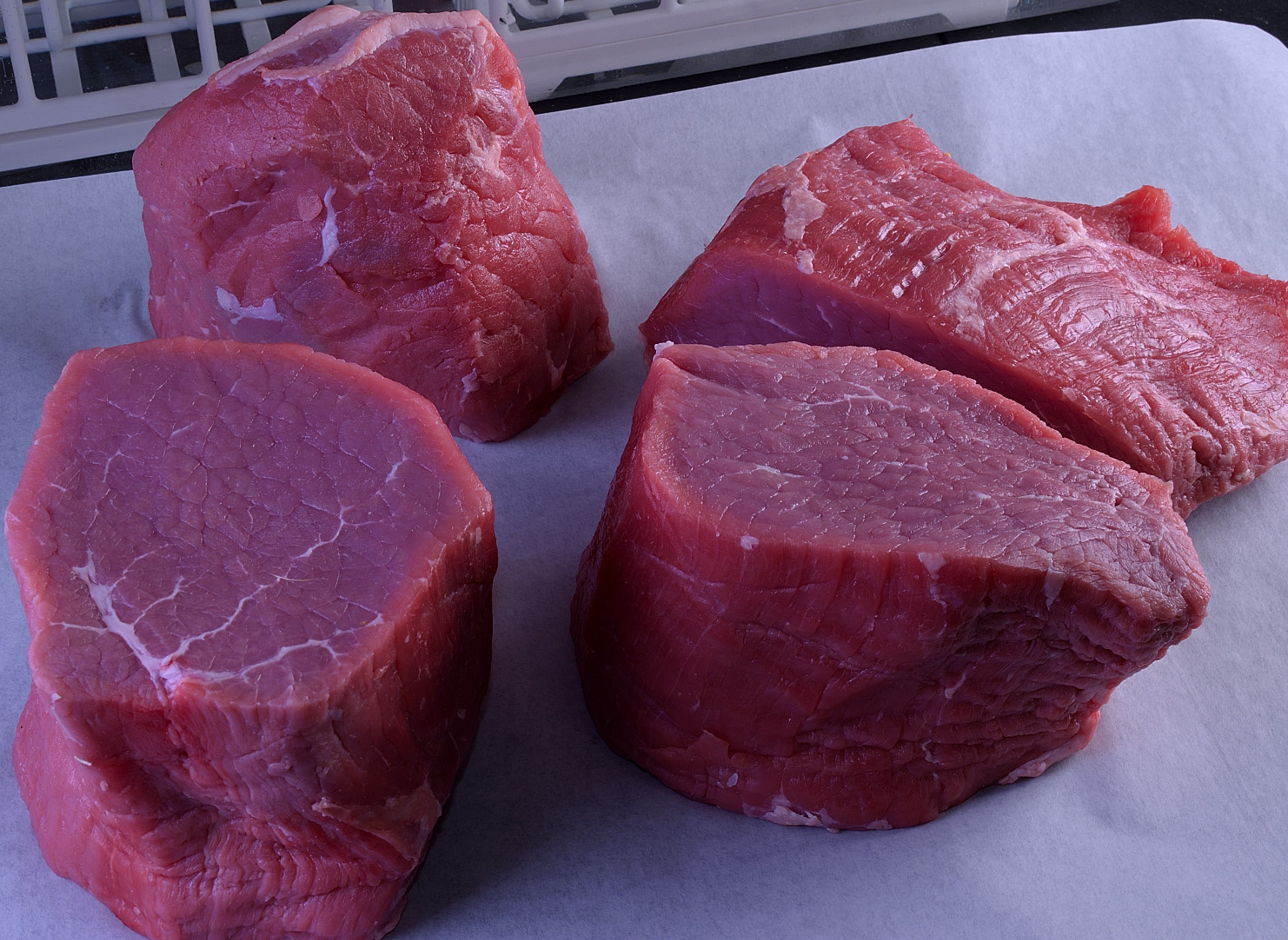
I cut the roast into four pieces. Note the pale color. Muscles like this that are used for support have less myoglobin content than muscles used for movement.
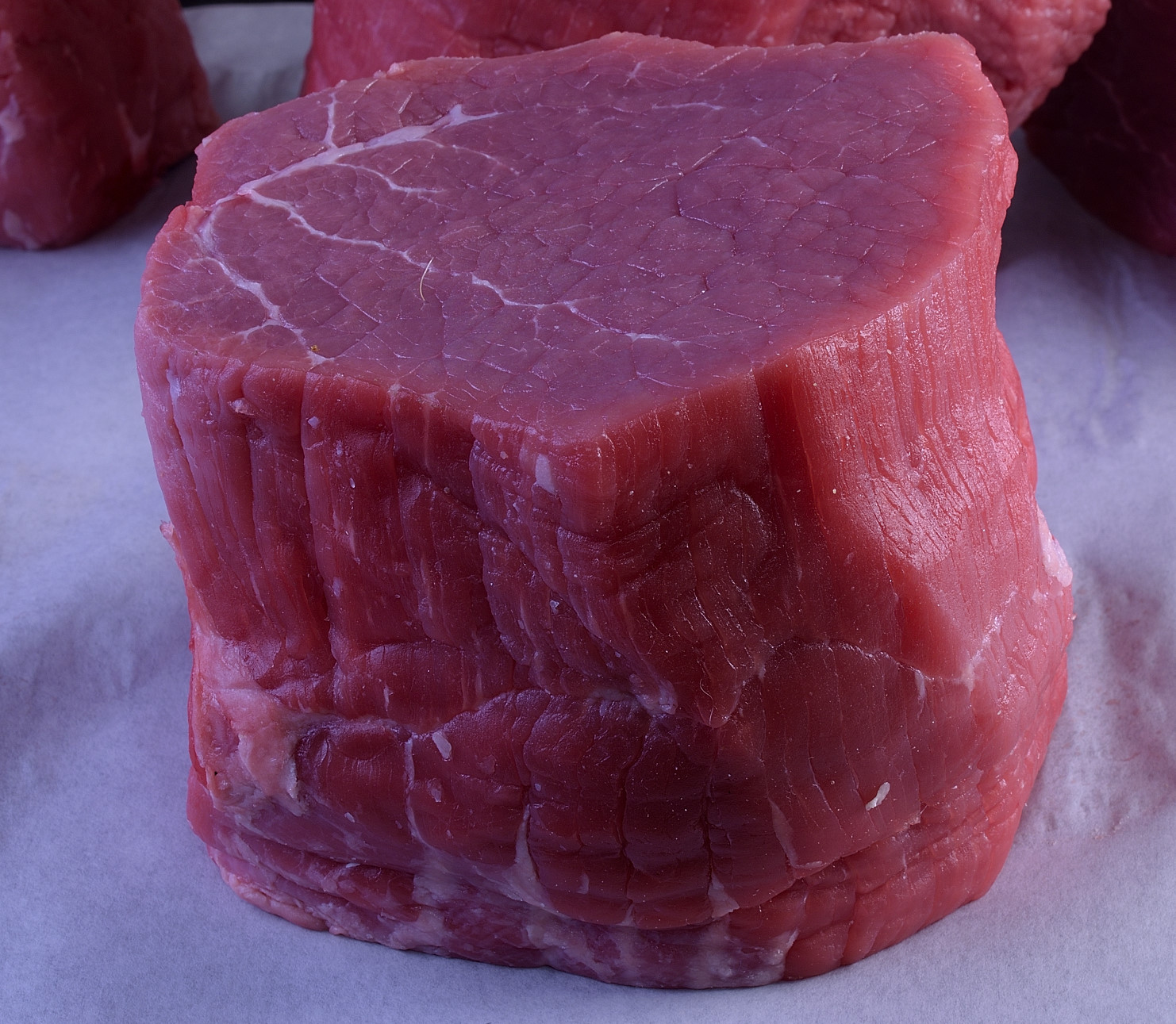
You can see that there is literally no intramuscular fat. This makes this cut very difficult–it’s even too lean to grind for hamburger.
Preheat the sous vide bath to 130 F/55 C.
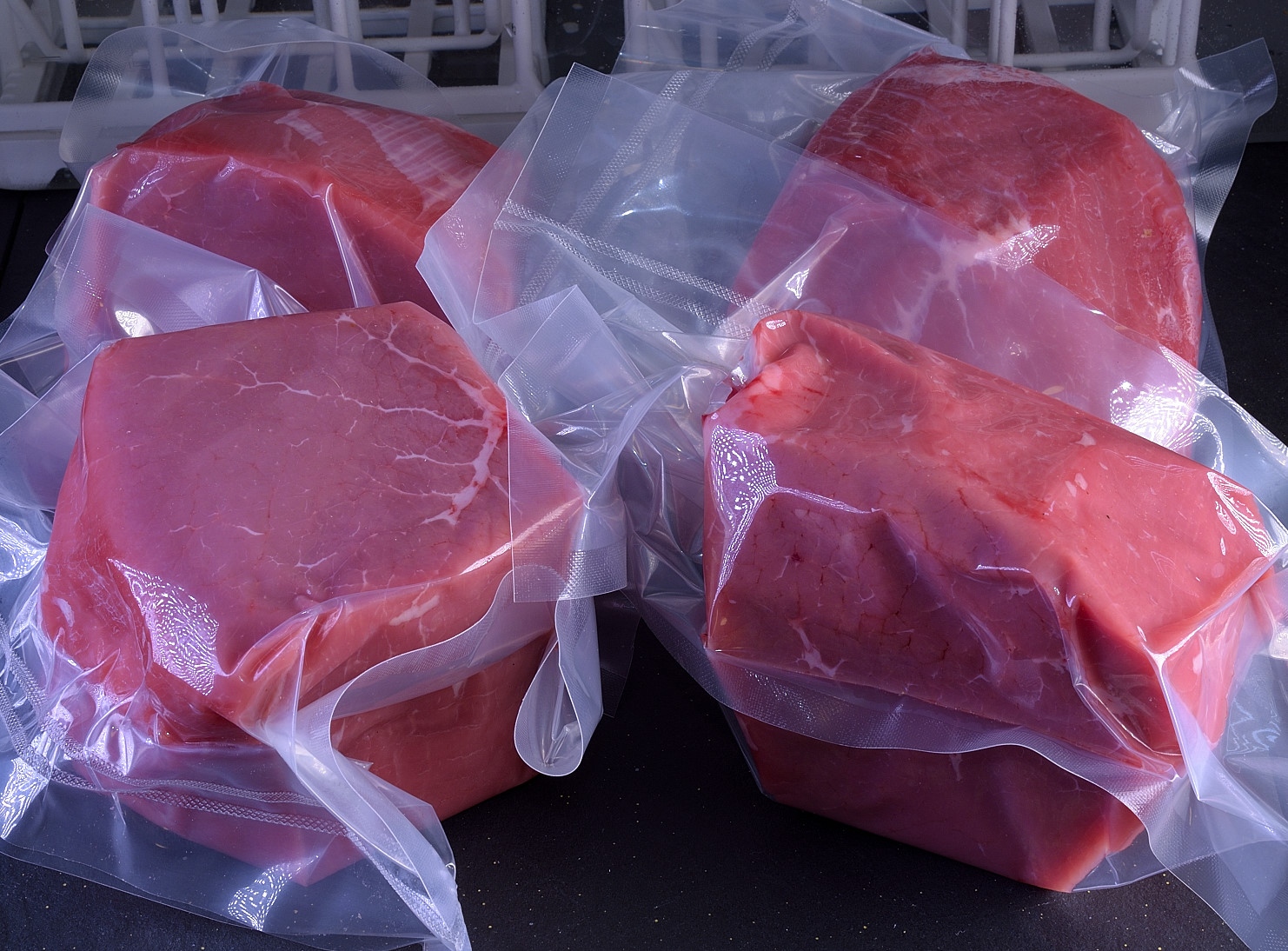
Stage the roasts into heat rated sous vide bags and vacuum seal.
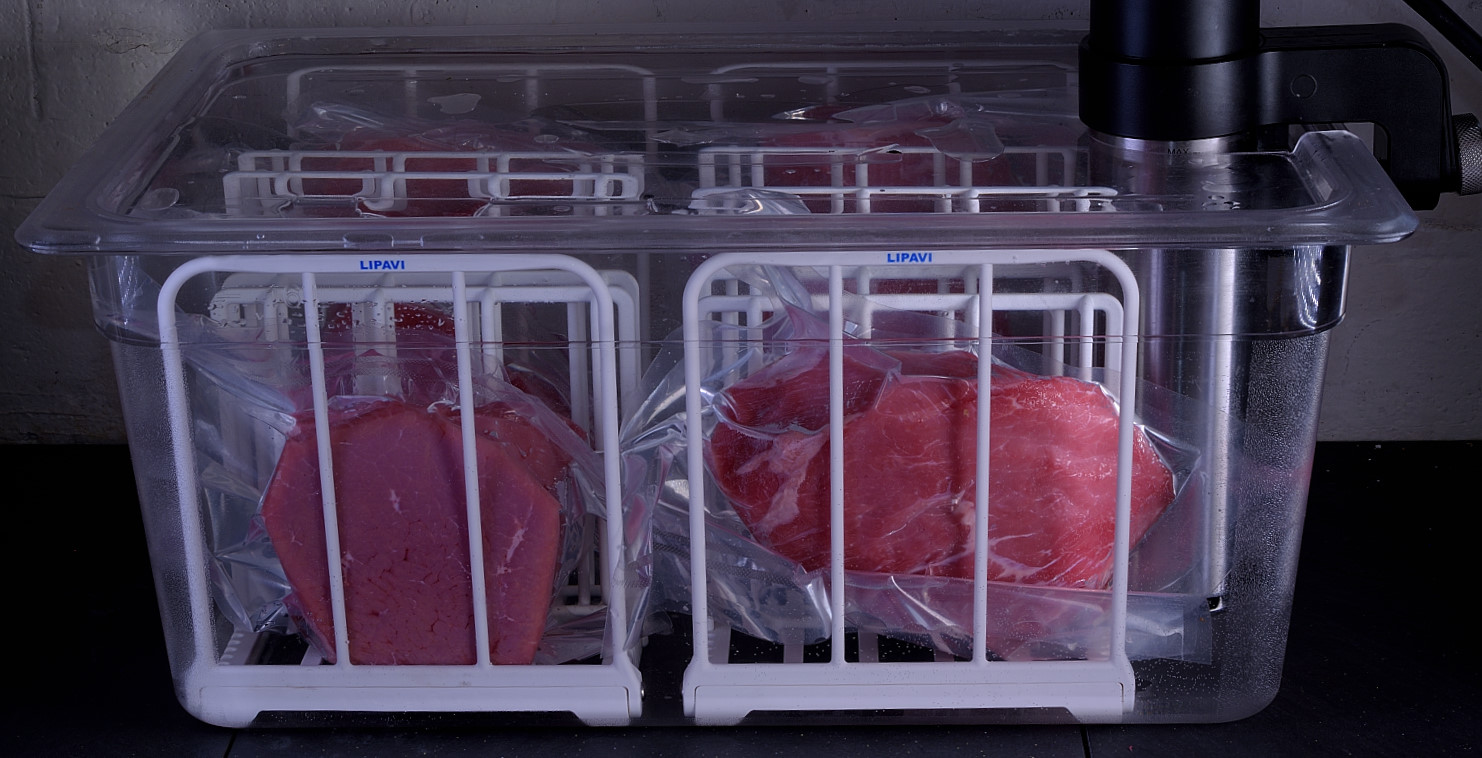
Arrange in a rack so that the water can circulate around them and lower into the bath. Fill the bath full enough and the Lipavi lid will form a seal against it. This prevents evaporation. Process the roasts at
130 F/55 C for 60 hours.
Upon completion of the sous vide process, you can proceed to finish and serve the dish or you can shock the packaged roast(s) in iced water until 70 F/21 C is achieved. Refrigerate to 40 F/4 C until day of service. In the sealed packaging, they can be safely refrigerated for at least two weeks. This means you can be ready to serve at your leisure within minutes instead of hours.
While you wait for the roasts, make the sauce base. For a detailed explanation of how to make brown sauce from beef trim, visit HERE. Heat a large skillet to 225 F/107 C. Add 1 oz/30 ml of vegetable oil–enough to coat the bottom of the pan.
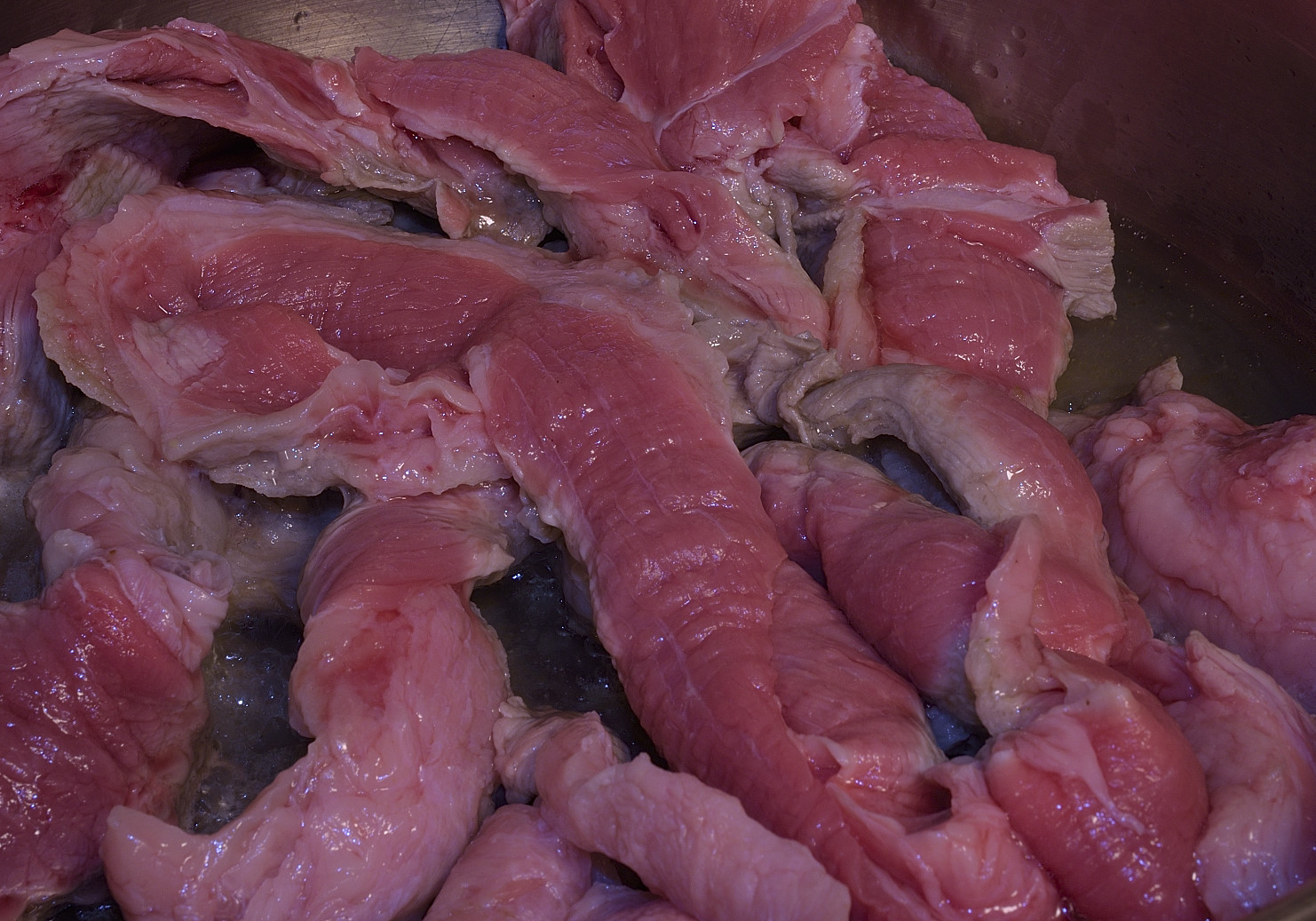
Add the the trim to the pan. Gradually increase the heat as needed to accommodate the bulk–keep the pan “sizzling.” Hissing sounds mean the pan is too cool–popping sounds mean the pan is too hot.
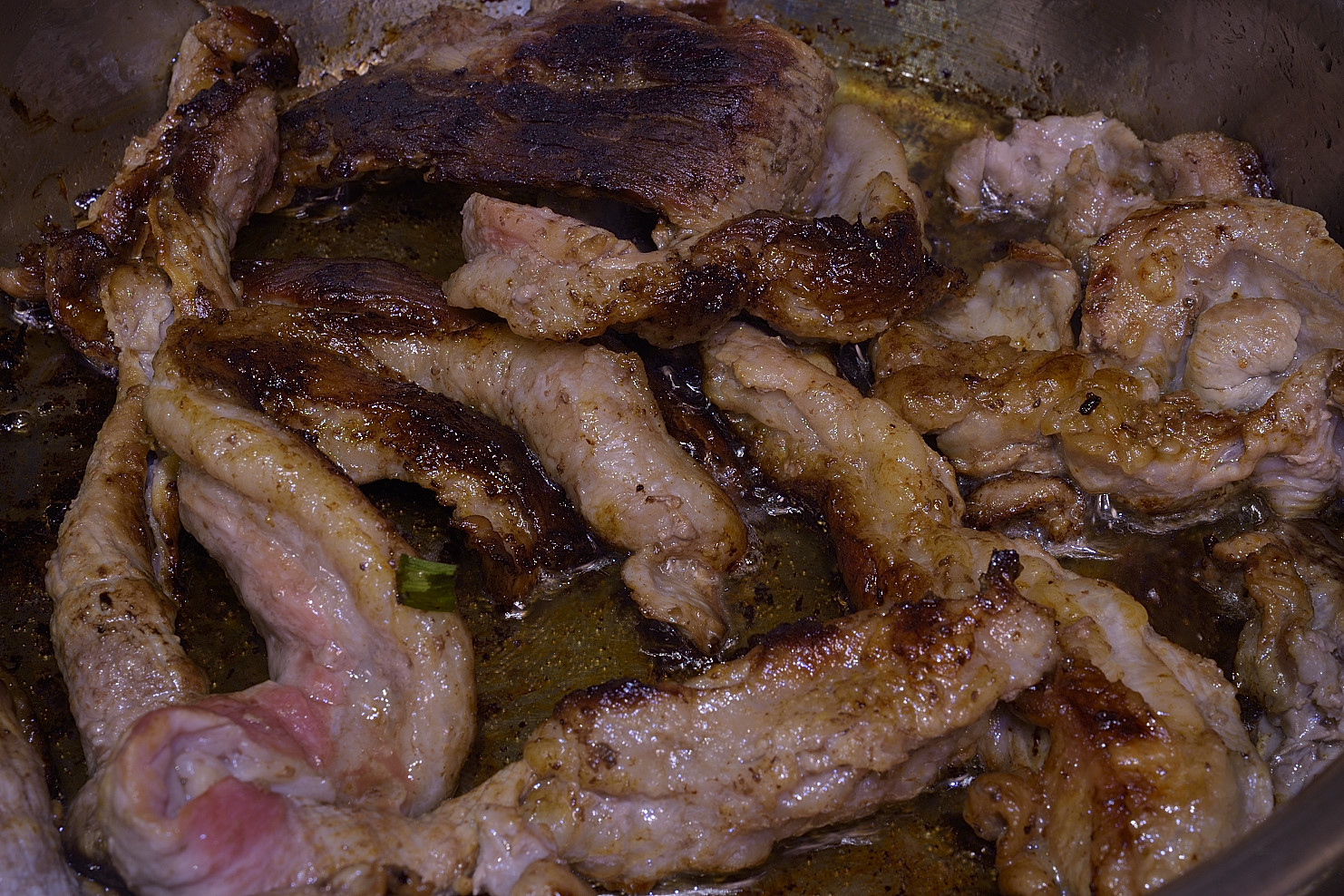
Brown well.
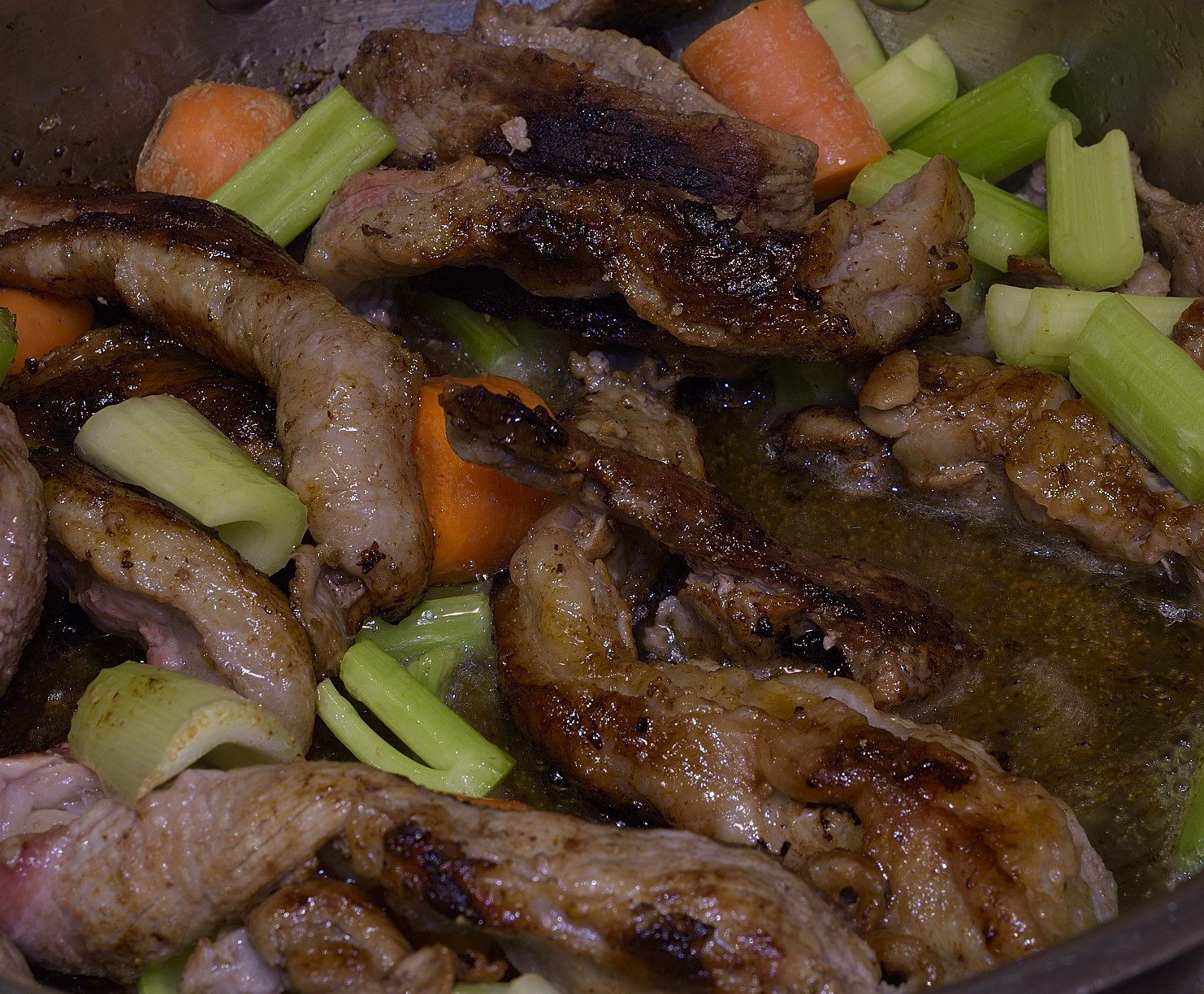
Add the roughly cut carrots and celery to the trim.
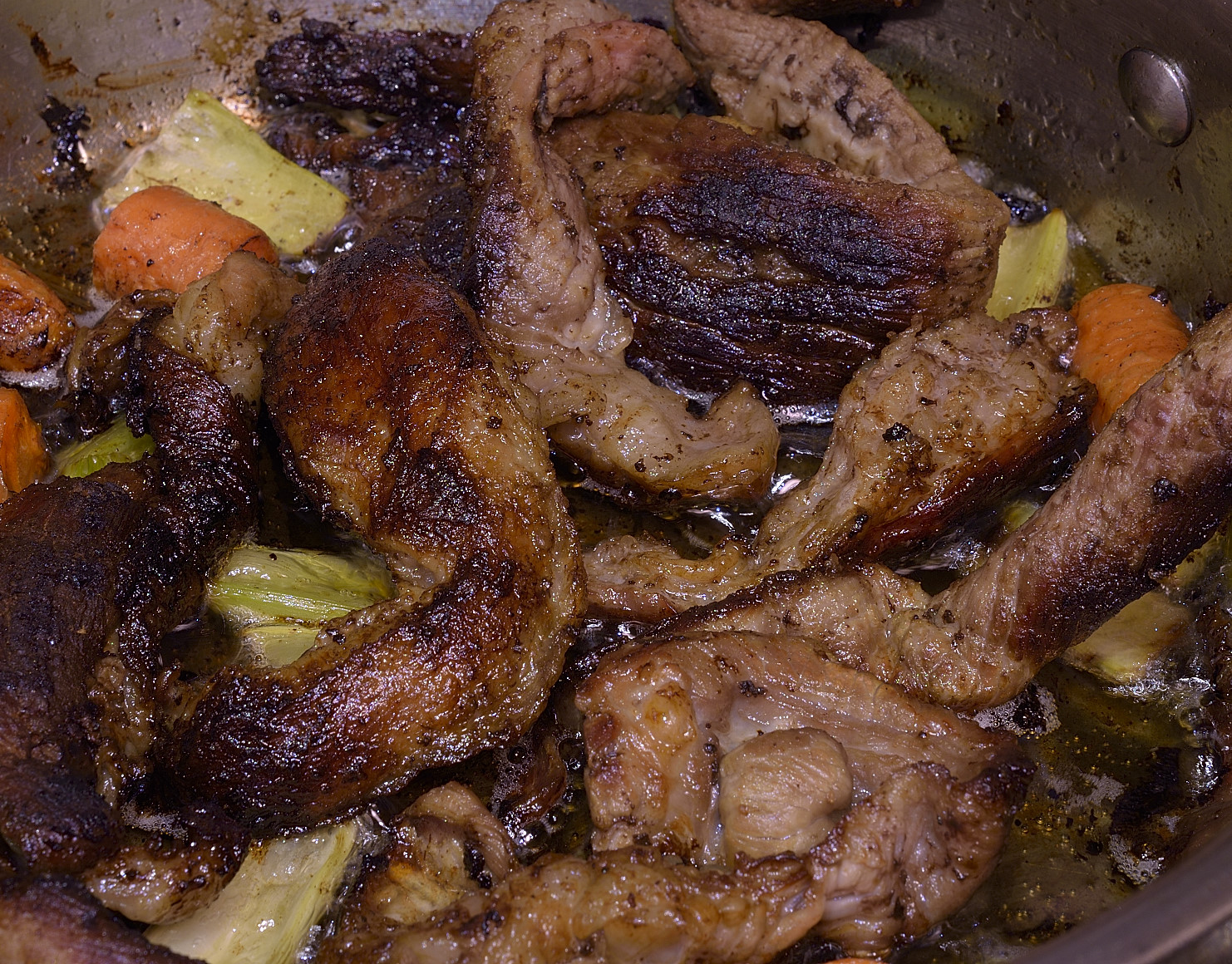
Brown for approximately thirty minutes. Keep in mind that stirring excessively cools the pan and impedes the caramelization process.

Onions have higher levels of simple sugar and brown faster–add them after the celery and carrots are brown. Continue sizzling for thirty minutes.
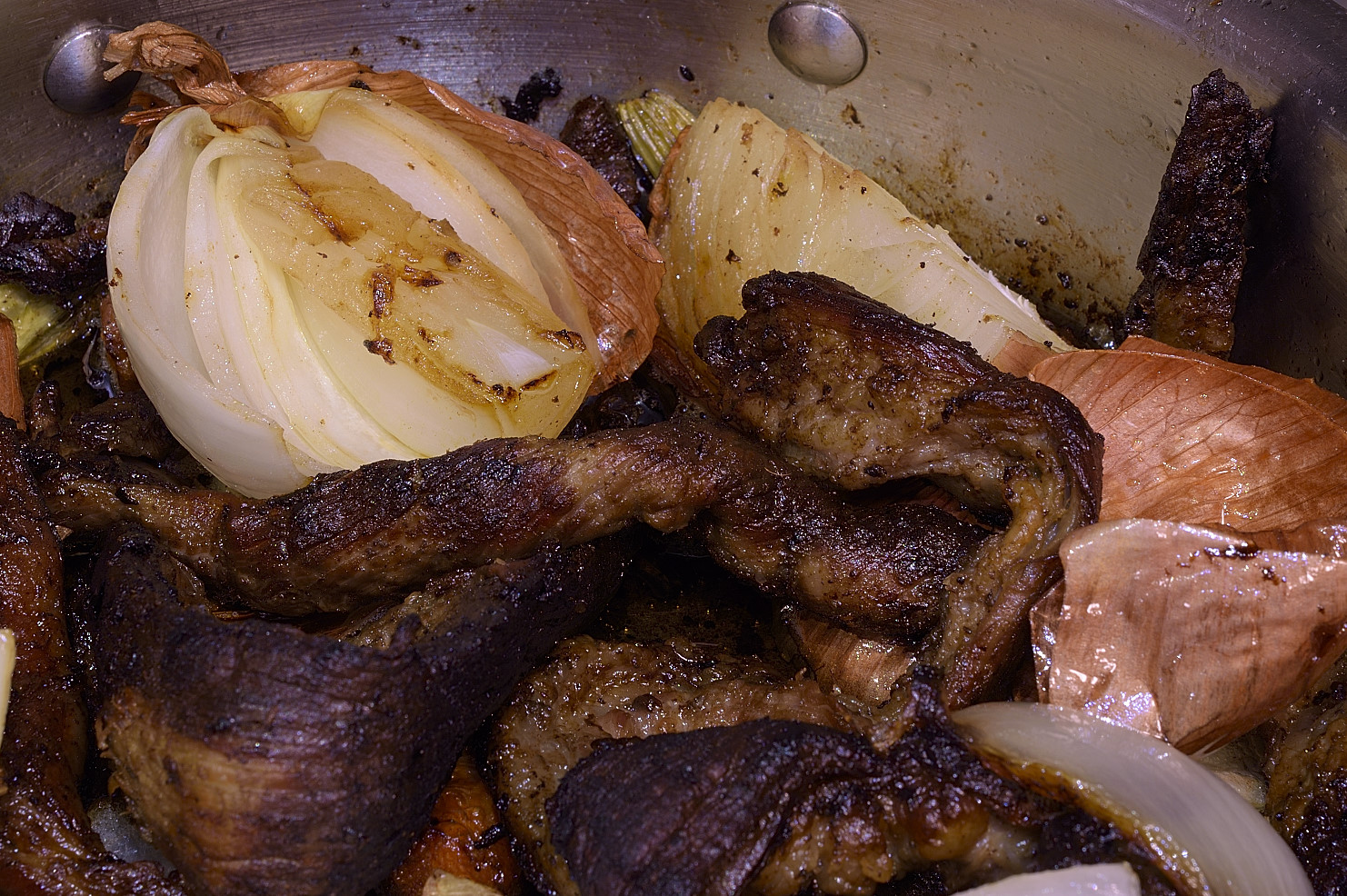
Combine the tomato paste with 1 cup of water.
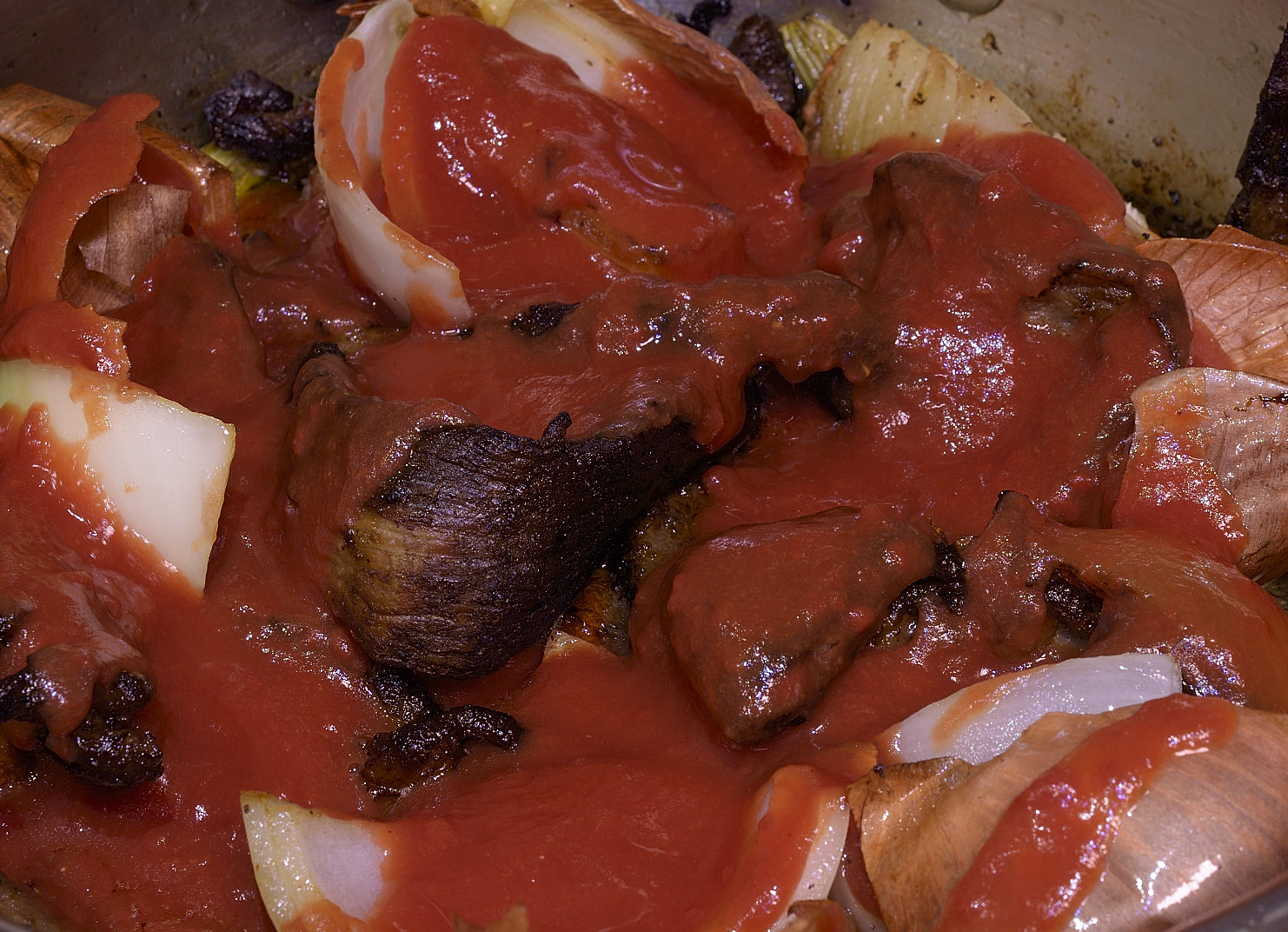
Once all the components are well caramelized, add the tomato paste and stir to coat.
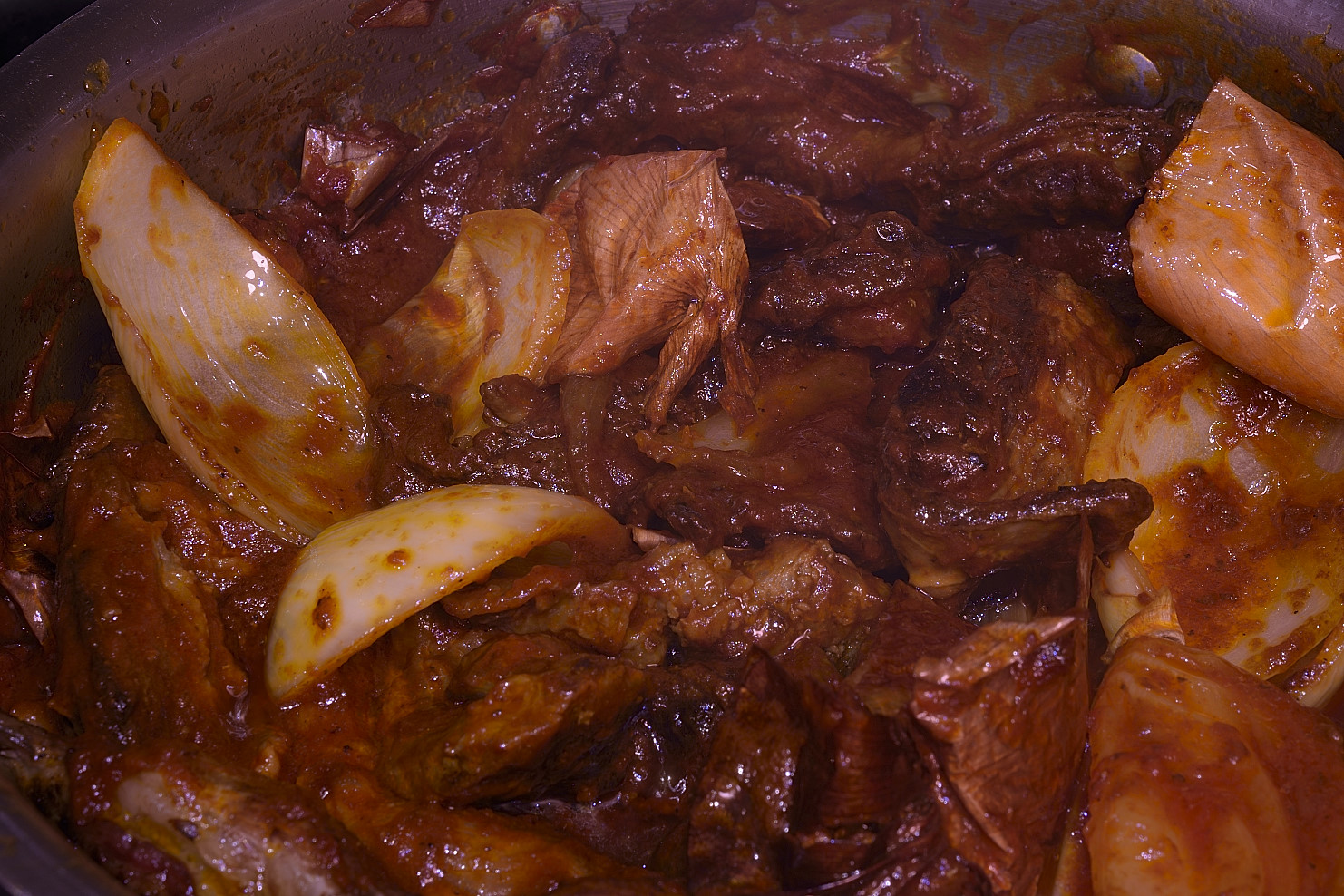
Continue browning the tomato paste–this is a very important step and is the difference between a brown sauce and a red sauce.
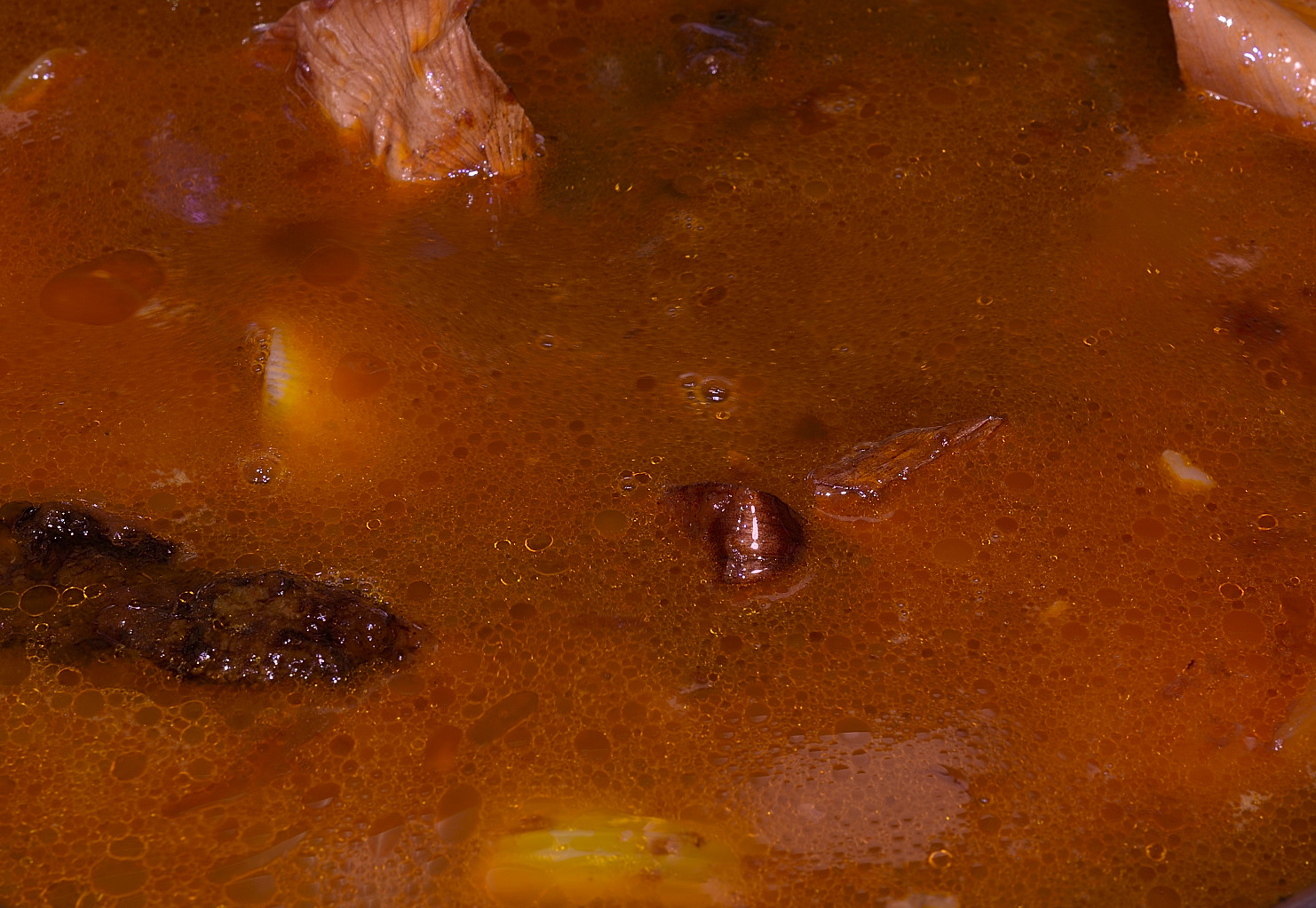
add 2 qt. /2 liters water.

Simmer for at least two hours,

Strain the stock base through a colander into a vessel to remove the larger pieces. Many cooks utilize the stock in this form by merely seasoning and thickening it with roux. Long ago, I was taught that the “dots” should be removed–this is optional, but highly recommended and not difficult.
I would love to tell you that among the many features of sous vide, the sauce can be prepared “in the bag” as part of the process. Unfortunately, brown sauces require caramelization of carbohydrates and Maillardization of proteins in order to achieve the desired effect. This is an ancient practice and is not difficult. It is, however, extremely time and labor intensive. Modern chefs typically opt to fortify their stocks with pre-made, pre-thickened sauce concentrates purchased from their suppliers. I do both. To learn how to clarify the stock before thickening, visit HERE.
Since this sauce base is still unseasoned at this point, the clarified version may be heavily reduced until it achieves a syrupy thickness on its own. It can also be mixed with any of the commercially available gravy mixes–I like Knorr’s version, linked HERE.
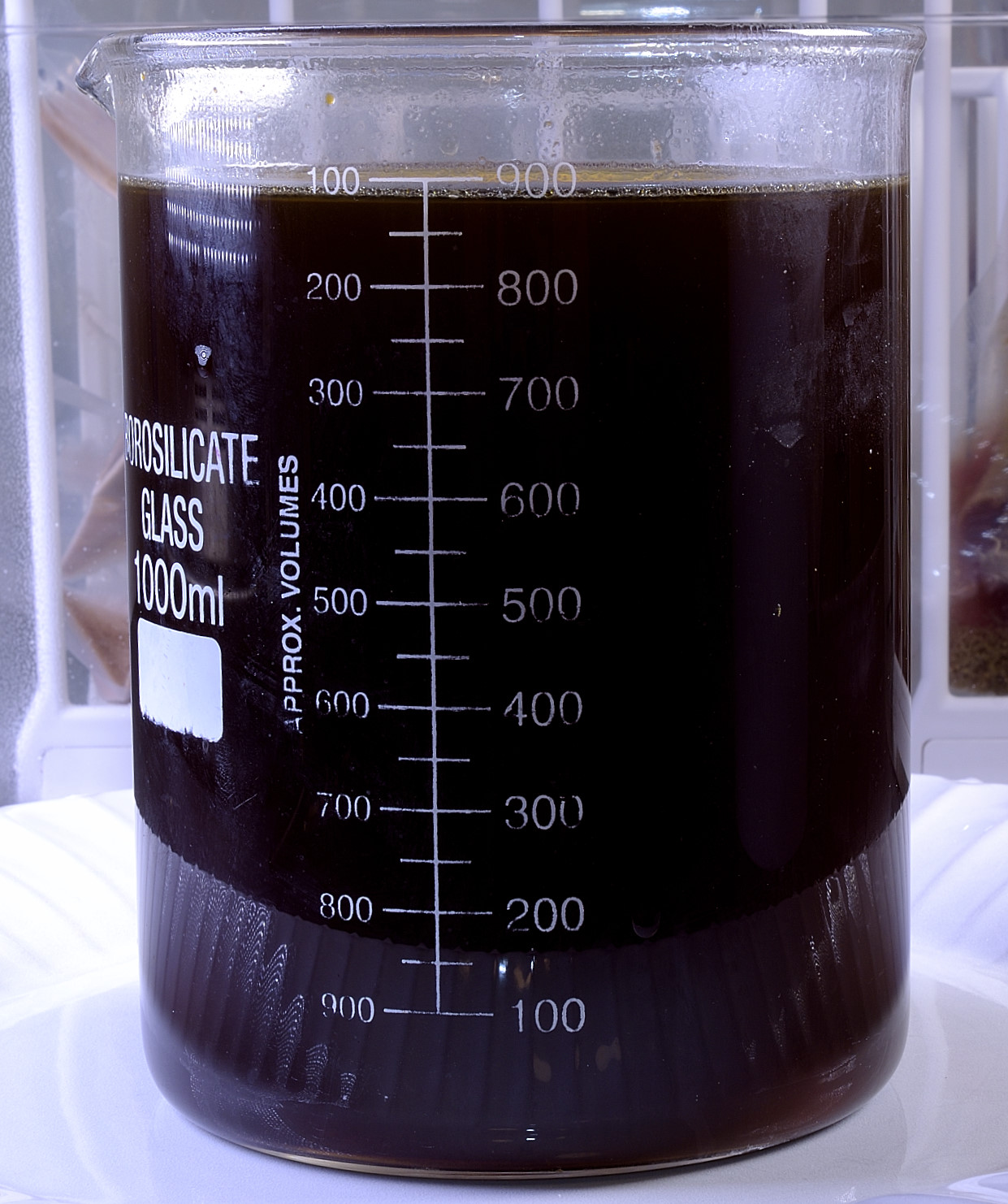
Set aside or refrigerate as needed.
Finishing and service
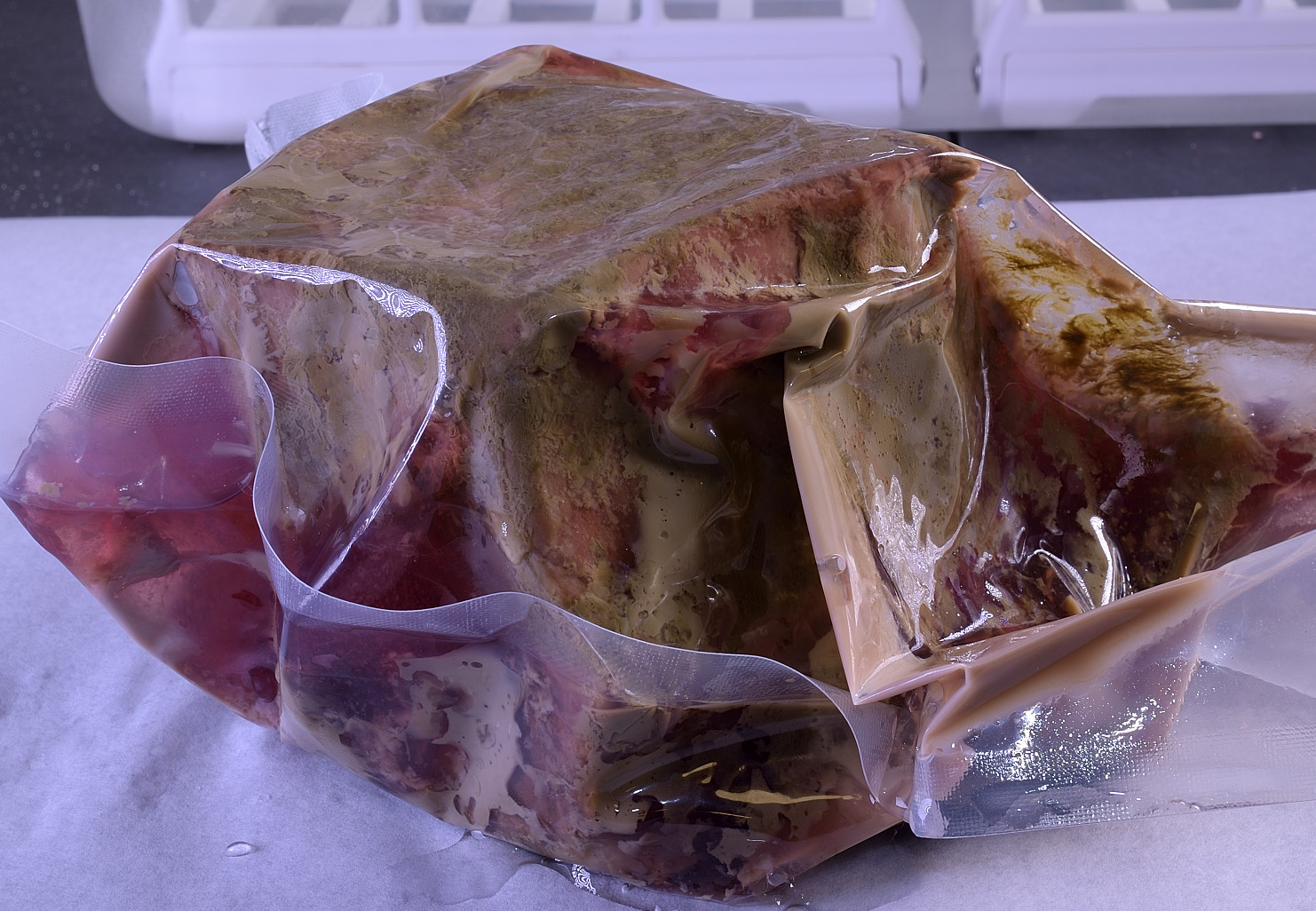
Remove the package from the bath (or the refrigerator). Harvest the juices as explained HERE and set aside.
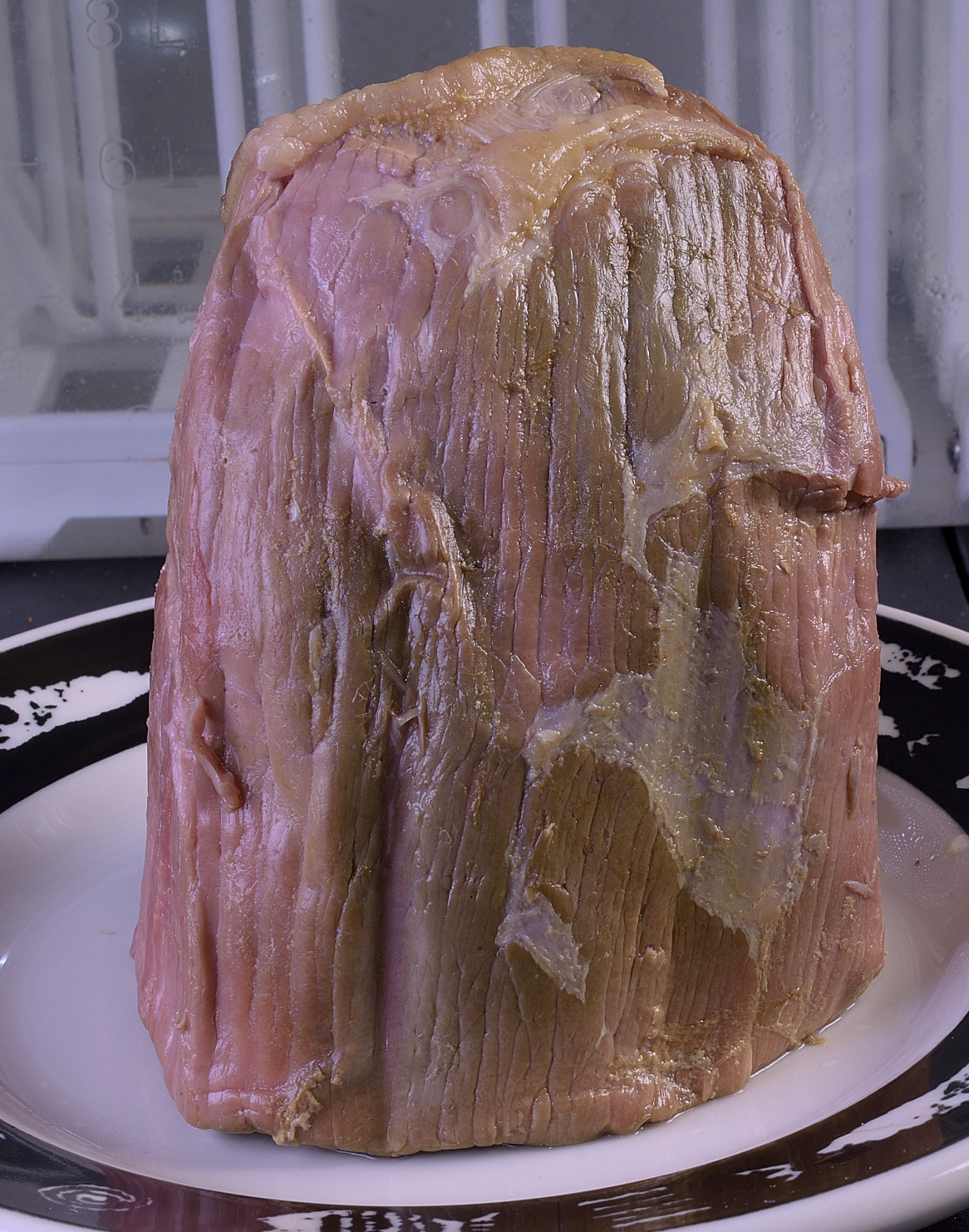
Remove the roast from the pouch and pat dry.
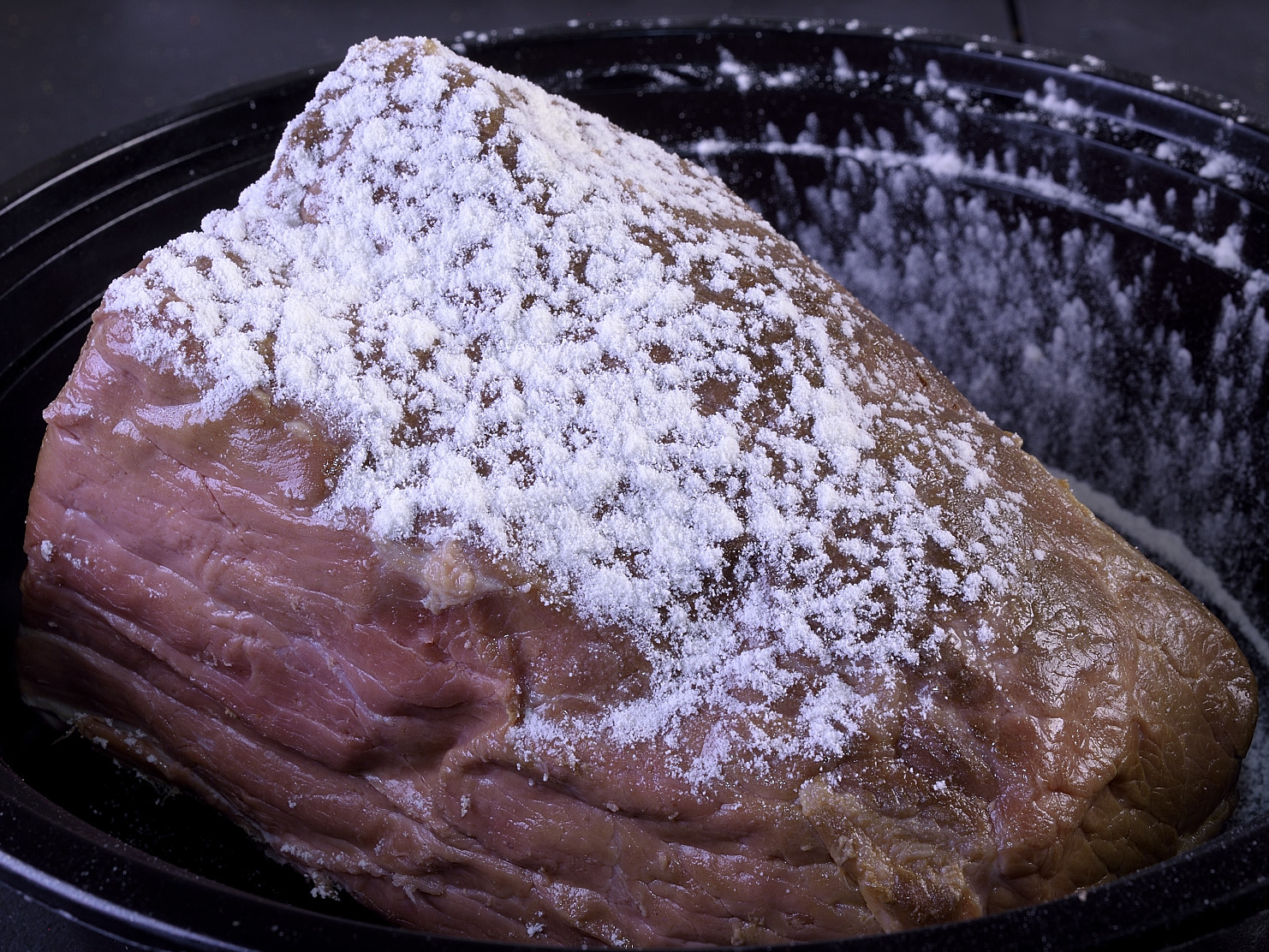
Dust lightly with powdered egg white.
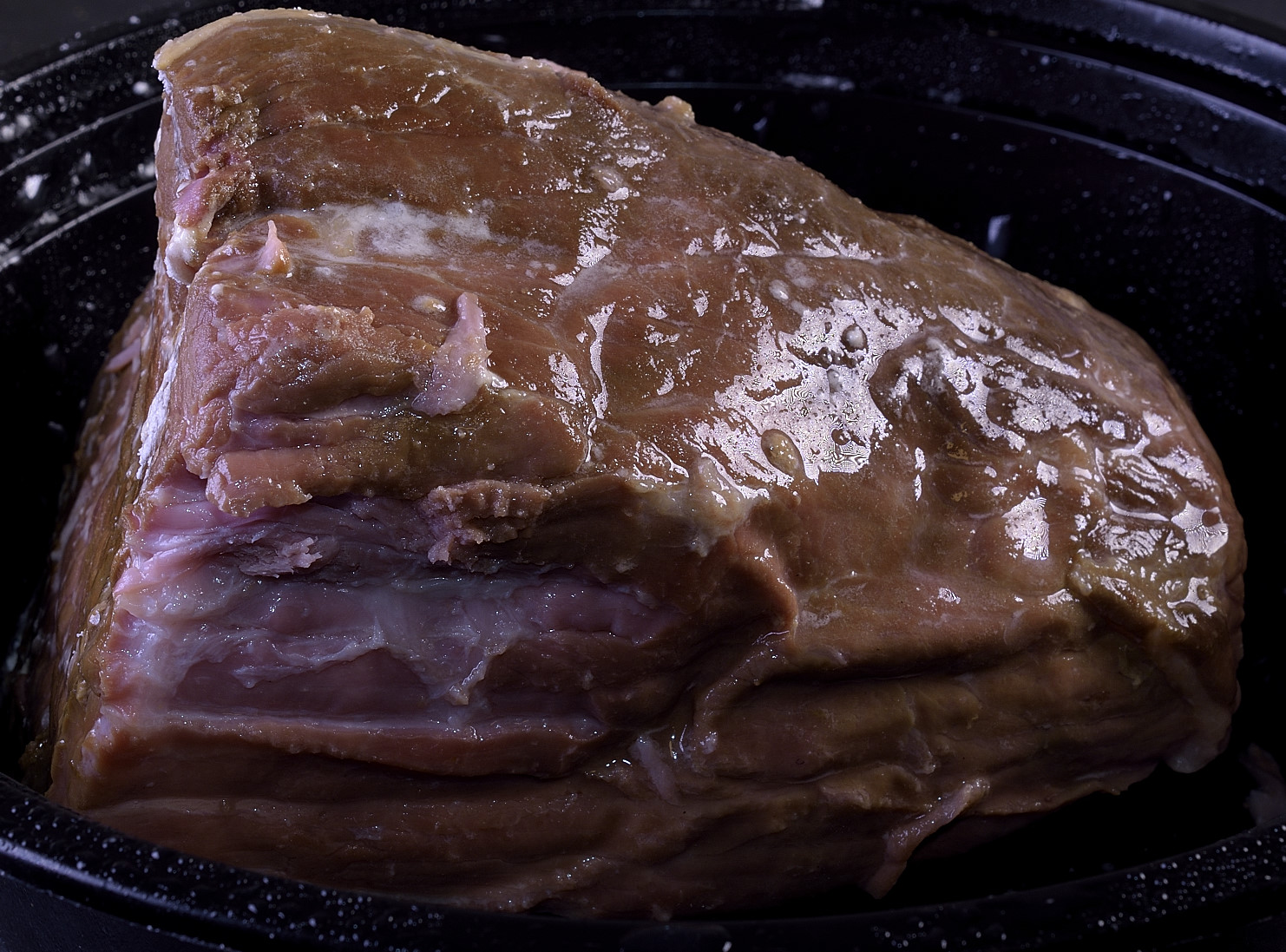
Put the roast in a small bowl and mist or douse with water to create a sticky surface. If using fresh egg white, mix with equal amounts of water and apply sparingly to the surface to create the same effect.
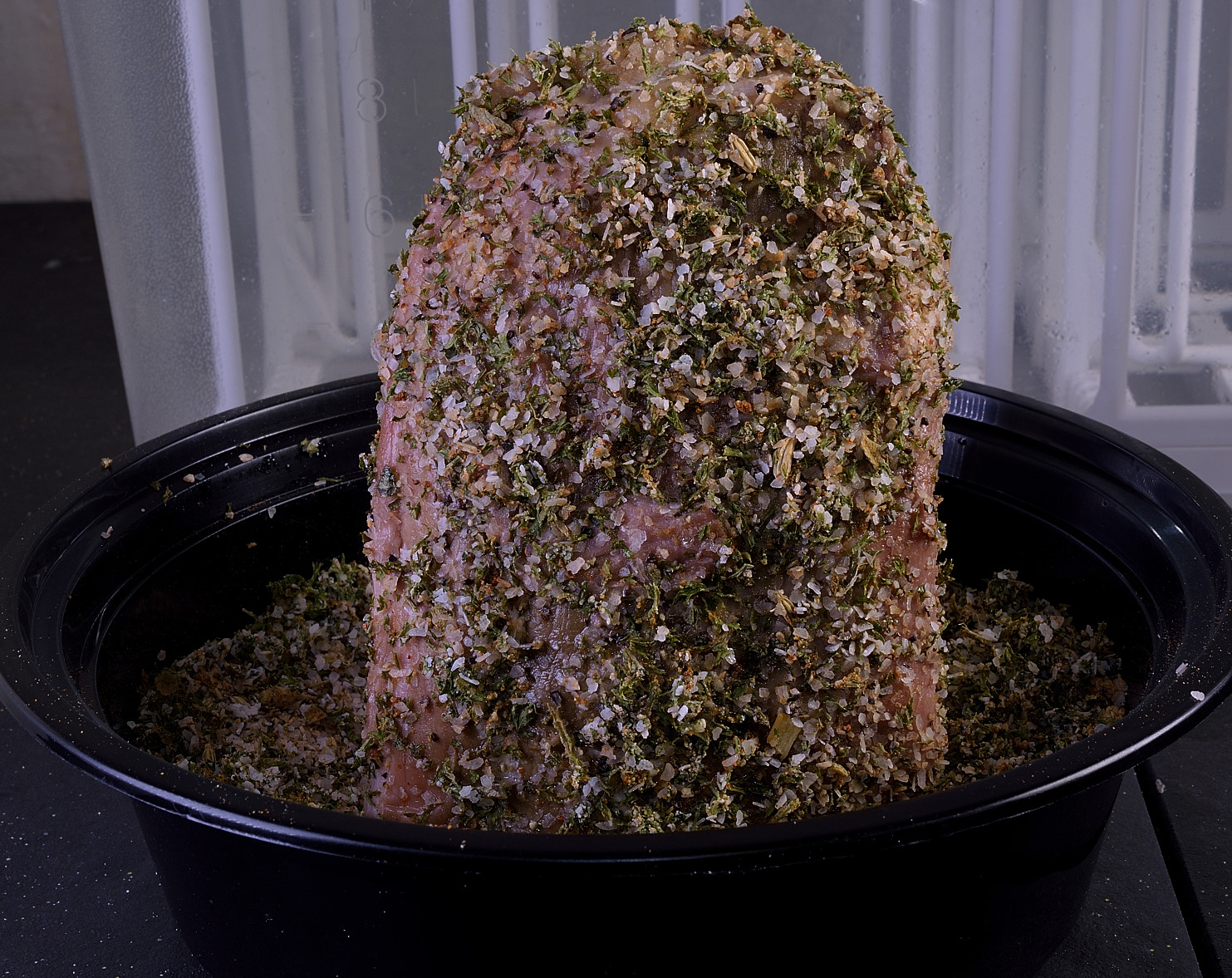
Roll in preferred seasonings–your own version or one of ours linked HERE.
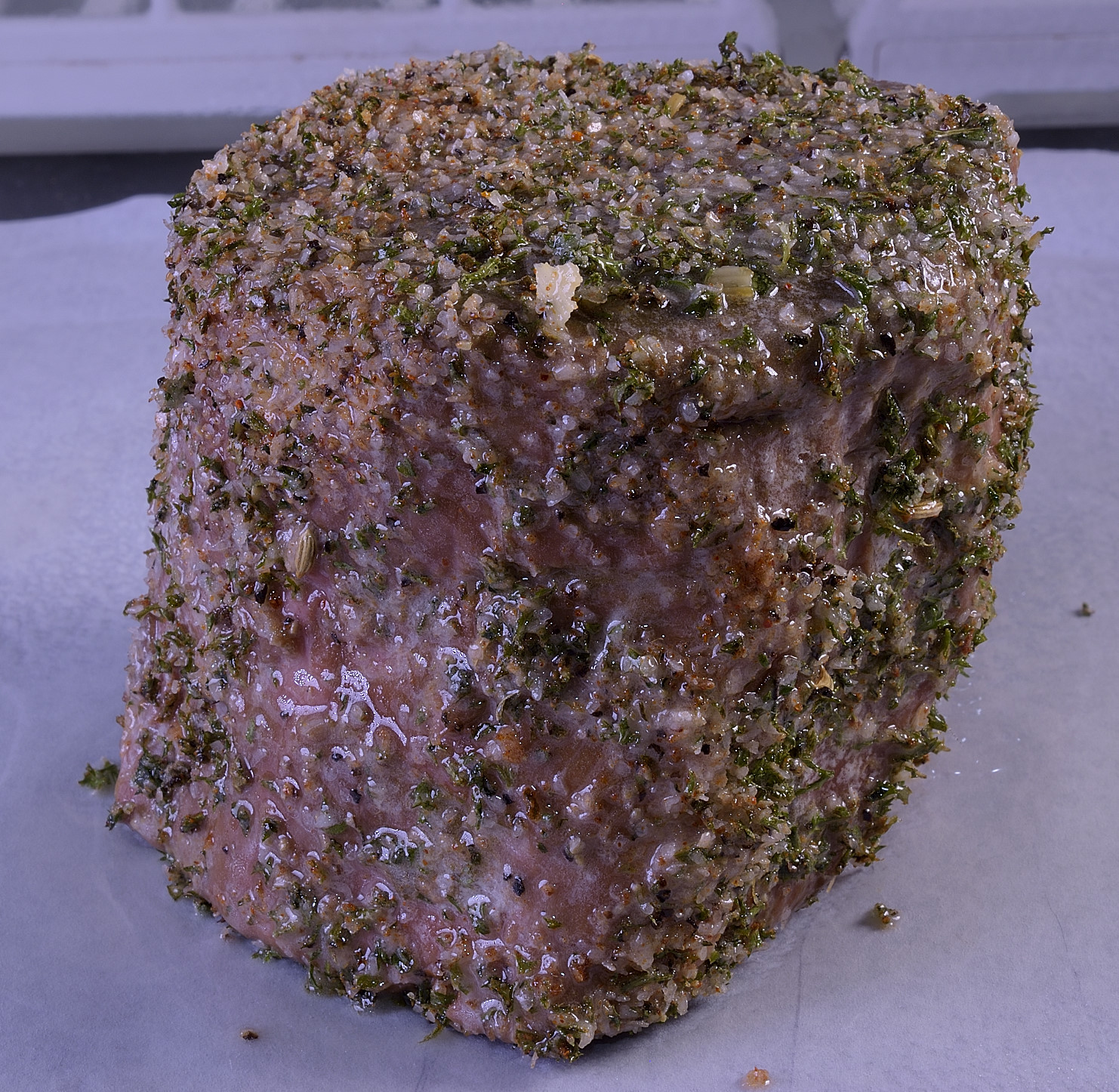
Spray or drizzle lightly with oil.
Heat a skillet to 250 F/120 C.
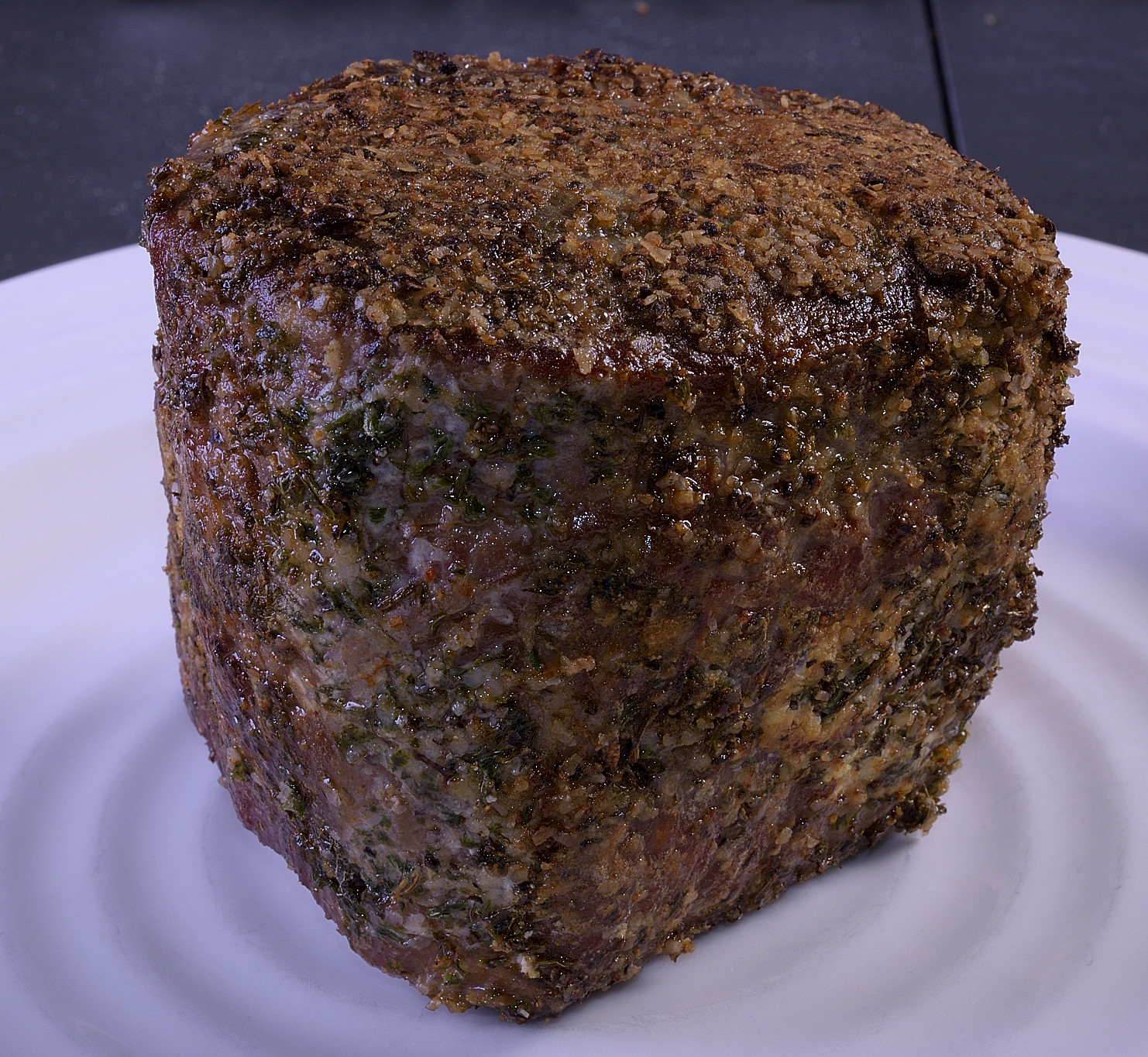
Put a few drops of oil in the pan and brown the roast on all sides. If the roast is still hot from the sous vide processing, proceed to finish. If the roast is cold from the refrigerator, preheat your oven to 250 F/120 C and stage the roast into the oven until an internal temperature of 125 F/52 C is achieved–15-20 minutes, usually.
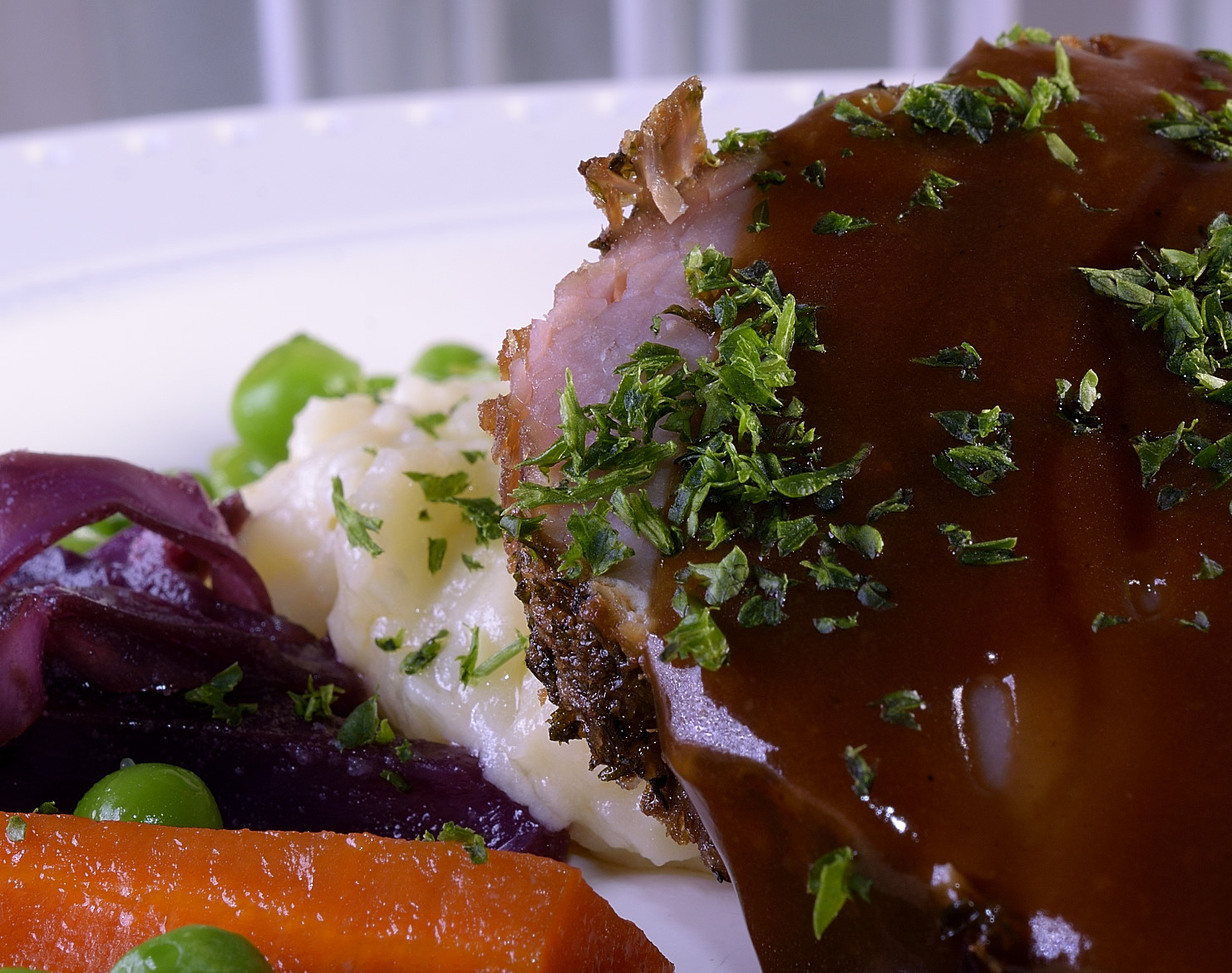
Finishing the sauce
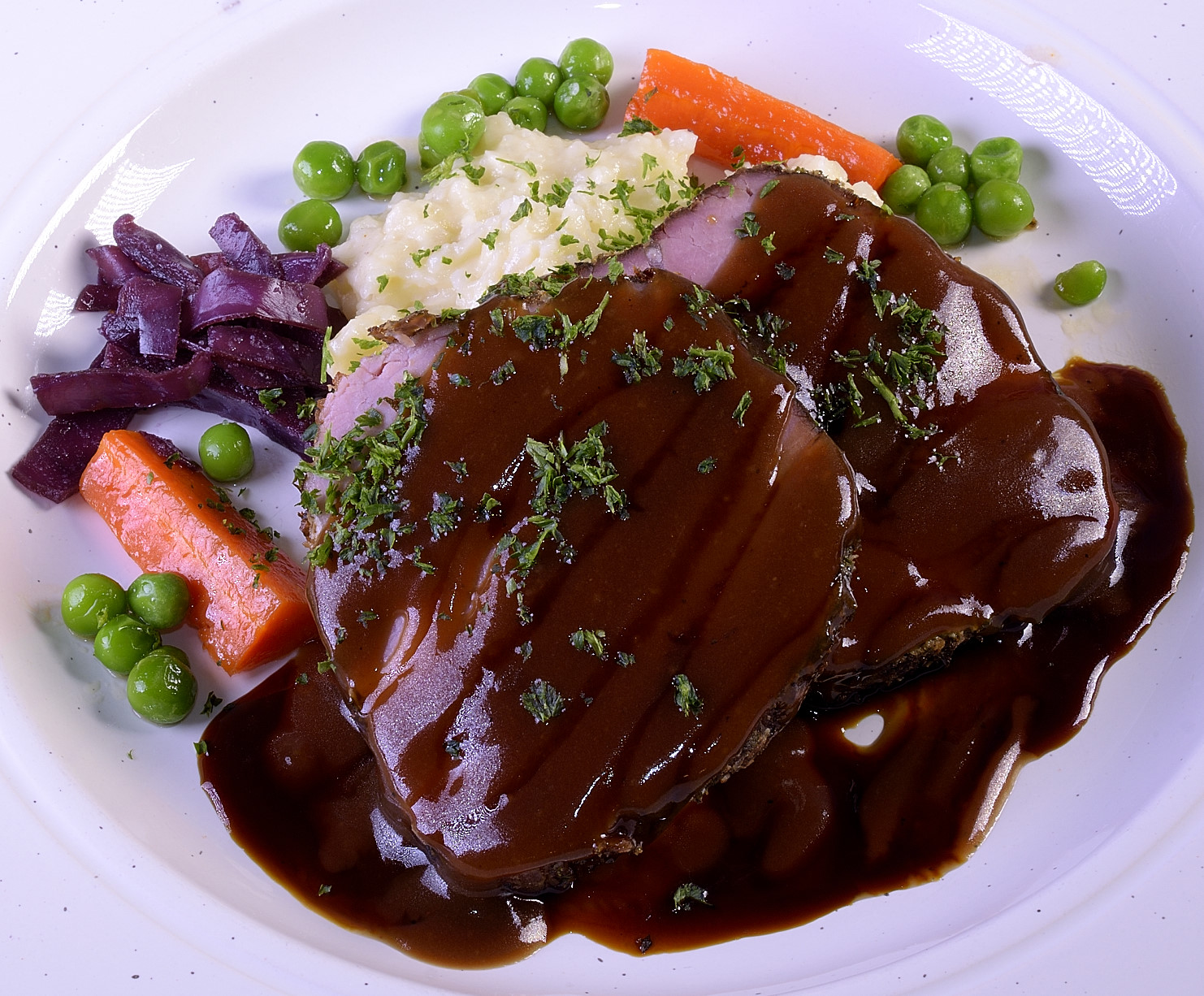
In the picture: peas and carrots are a natural accompaniment, as is mashed potatoes. We also made some red wine cabbage for the presentation. There are two sauces utilized. The reddish brown sauce is clarified stock mixed with Knorr Demi-glace. The extremely dark sauce ribboned over the top is our clarified stock reduced by 90%.
Norm King
Notes: Shredded Eye of Round
Eye of round is perfect for any application that calls for “pulled” beef–tacos, nachos, sliders, you name it. Dip the package of meat in hot tap water for five minutes to dissolve the gel. Harvest the juices and process as described HERE. Set aside for another application.
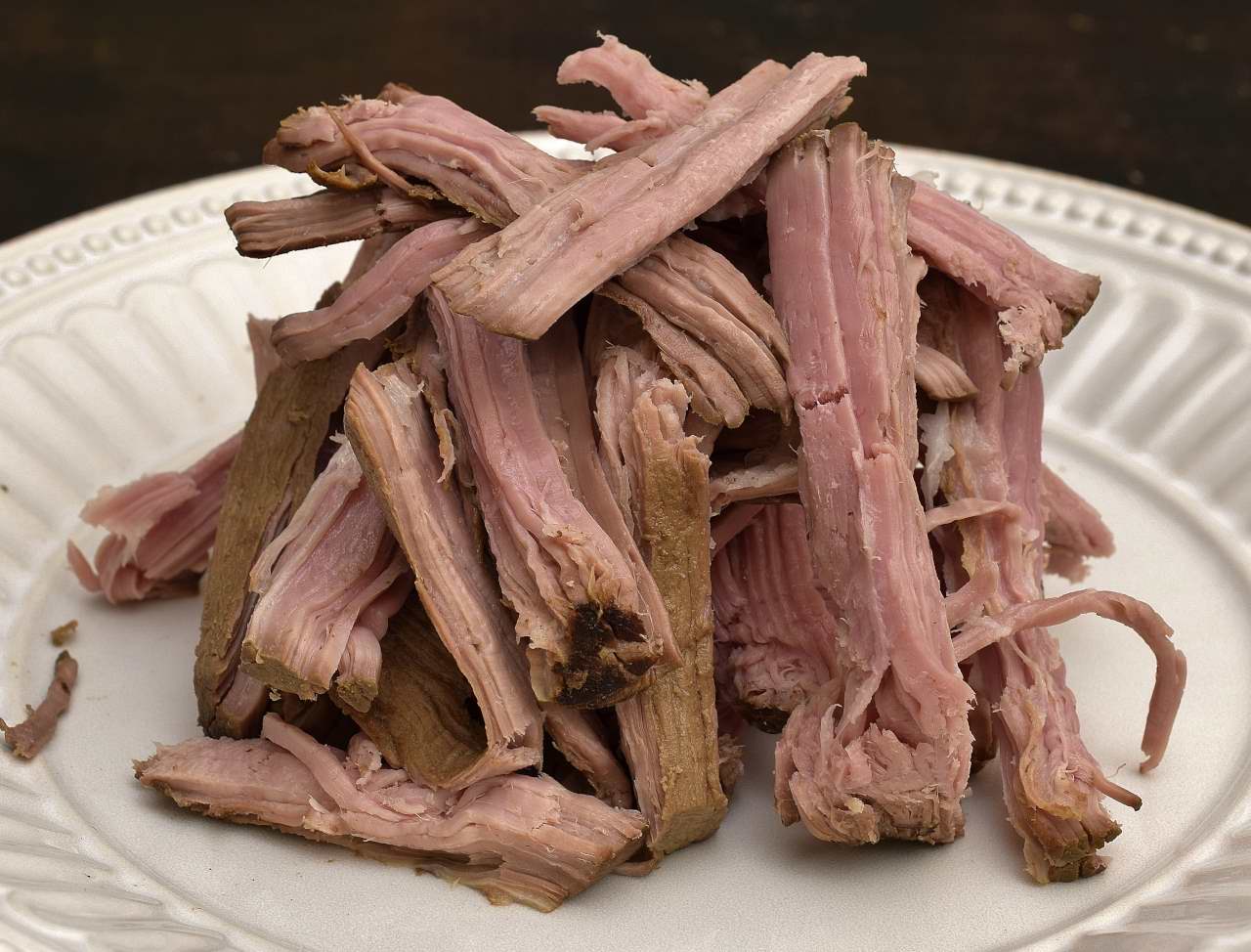
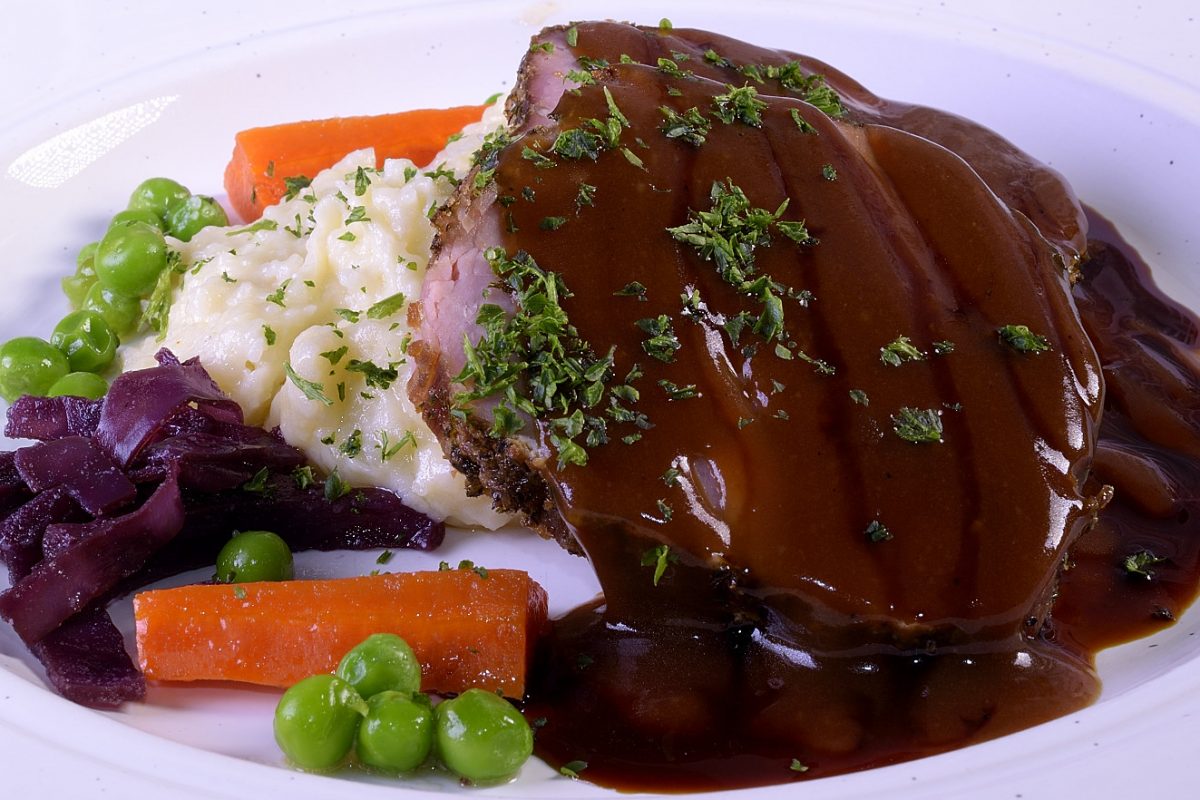
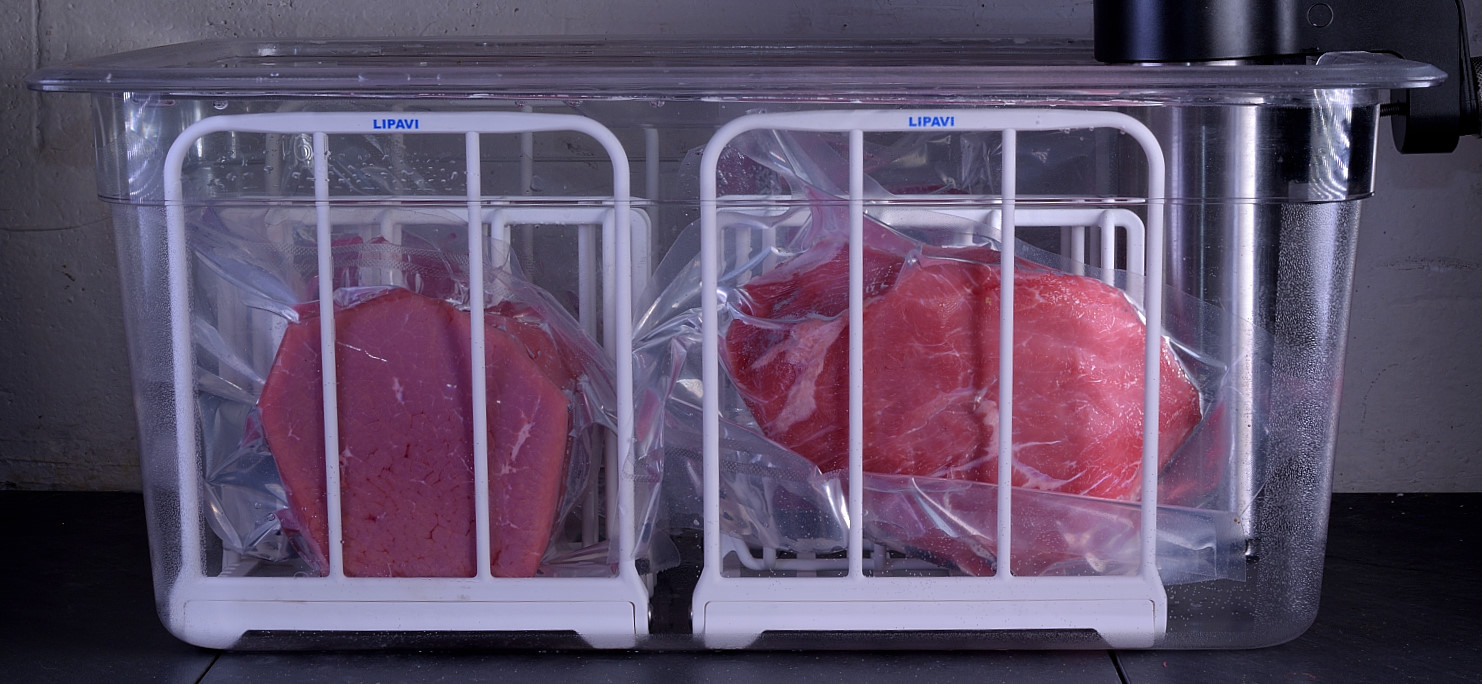
When I originally commented I appear to have clicked on the -Notify me wnen new comjents
are added- checkbox and fro noow on each time a comment
is added I recieve 4 emails with the exact same comment.
Perhaps there is a wway you can remove me from that service?
Kudos!
Feel free to surf to my web-site … Ollie
Hey there! I know this is kinda off topic
however I’d figured I’d ask. Would you be interested in trading links or maybe guest writing a blog article or vice-versa?
My website covers a lot of the same topics as yours and I feel we could greatly benefit from each other.
If you’re interested feel free to shoot me an e-mail.
I look forward to hearing from you! Great blog by the way!
Have a look at my web page … vpn 2024
What’s up everybody, here every one is sharing such experience, so it’s nice to read this webpage, and I used to go to see this
blog daily.
Also visit my web blog – vpn coupon code 2024
Hi it’s me, I am also visiting this website regularly, this site is actually nixe
and the visitors are genuinely sharing pleasant thoughts.
My web site; http://oldpeoplewholikebirds.com/forum/memberlist.php?mode=viewprofile&u=29850
I am not sure thee plpace you’re getting your info, however good topic.
I needs to spend a while finding out more or understanding more.
Thanks for magnificent info I use to be looking for thhis info for my mission.
Here is my web-site … http://Www.Gmpafrica.com/viewtopic.php?t=3940
Attracttive section of content. I just stumbed upon your siute andd inn accession capital to clzim that I get in fact enjoyed account your weblog
posts. Any way I’ll be subscribing on your feeds and even I fulfillment you get entry to constantly fast.
my homepage – Jacqueline
wonderful points altogether, you simply gained a brand
new reader. Whatt could you recommehd about your put up
that you simply made some days in the past? Any
sure?
Look at myy site – http://Www.Oople.com/forums/member.php?u=238051
Good site you’ve got here.. It’s difficult facebook vs eharmony to find love online find good quality writing like yours nowadays.
I truly appreciate people like you! Take care!!
you’re in reality a excellent webmaster. The web site looading
velocity is incredible. It sort of feels that you are doing any distinctive trick.
In addition, The contents are masterwork. you have performed a magnificent process on this
matter!
Also visit my weeb blog http://forum.d-dub.com/member.php?841939-Julifdb